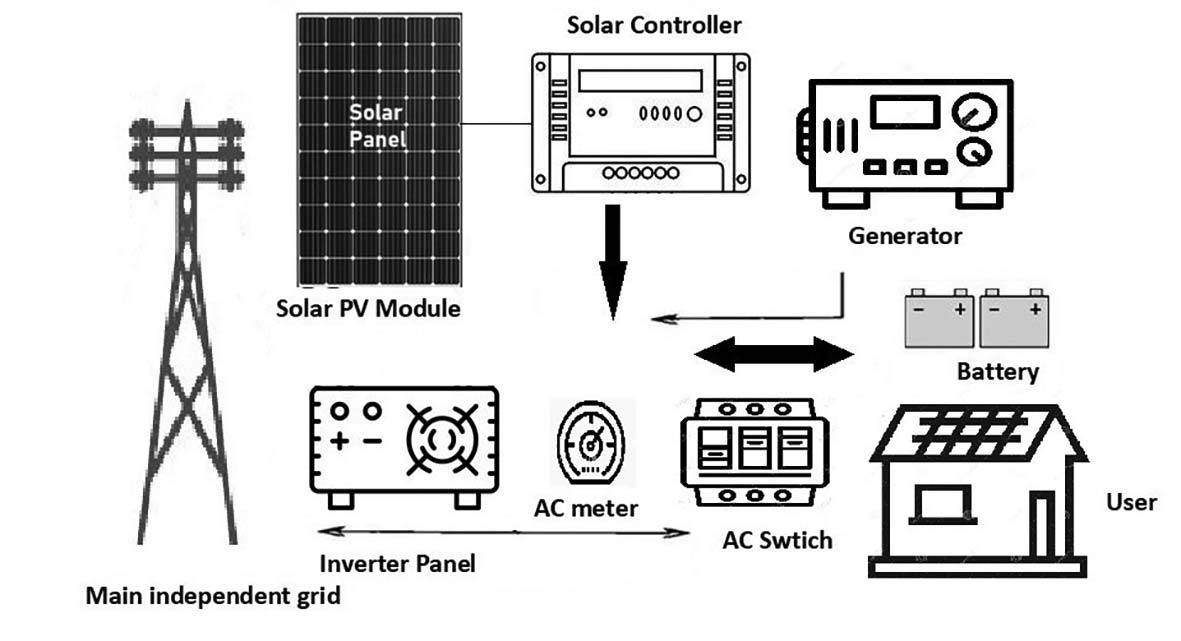Engr. Dr. Muhammad Nawaz Iqbal
A photovoltaic system transforms light from the Sun’s energy into useful electricity. It consists of the solar array and the remaining parts of the system. Grid-connected vs. stand-alone, building-integrated vs. rack-mounted, residential vs. utility, distributed vs. centralized, rooftop vs. ground-mounted, tracking vs. fixed-tilt, and newly built vs. retrofitted are some of the different ways that PV systems can be classed. Systems employing crystalline silicon versus thin-film technology, systems using micro inverters versus central inverters, and systems using modules are a few other possible distinctions. The price of photovoltaic is continuously falling, driven by technological advancements, increases in manufacturing scale, and increased manufacturing expertise. There are several million PV systems spread out around the globe, notably in North America with 440,000 systems in the United States and Europe with 1.4 million systems in Germany alone. Since 2004, a standard solar module’s energy conversion efficiency has increased from 15 to 20 percent, and a PV system recovers the energy used in its production in around two years.
A grid-connected system delivers energy directly into the grid by connecting to a larger independent grid (usually the public electricity grid). Depending on whether the credited energy output is determined independently of the customer’s energy use (feed-in tariff) or merely on the difference of energy, this energy may be shared by a residential or commercial building before or after the revenue measurement point (net metering). The sizes of these systems range from small household (2-10 kWp) to large solar power plants (up to 10s of MWp). This is a decentralized method of producing electricity. A specific, synchronizing grid-tie inverter is required to convert DC into AC before electricity can be fed into the grid.
Residential rooftop, business rooftop, and ground-mount utility-scale systems are the three main market sectors for photovoltaic systems. They might be as small as a few kilowatts or as large as hundreds of megawatts. While a typical business system can be up to a megawatt in size and is typically put on low-slope or even flat rooftops, a typical home system is approximately 10 kilowatts and positioned on a sloped roof.
Small PV systems have the capacity to generate enough AC electricity to run a single residence or a single isolated equipment with AC or DC power. Depending on the design and power requirements, integrated photovoltaic systems may be used as a primary or auxiliary power source to provide AC or DC electricity for electric automobiles, street lighting, construction and traffic signals, solar-powered tents, and electric aeroplanes. In 2013, 60 percent of installations worldwide were rooftop systems. Although the focus of new PV installations is shifting from Europe to nations in the Sunbelt portion of the world, where opposition to ground-mounted solar farms is less pronounced, there is a trend away from rooftop and toward utility-scale PV systems. For “off the grid” operation, portable and mobile PV systems supply electricity without the need for utility connections. These systems are installed on boats and recreational vehicles so frequently that there are businesses that focus on them and sell materials made just for them.
Photovoltaic arrays are frequently used on rooftops in urban and suburban areas to supplement energy use. If the building is connected to the power grid, the energy generated by the PV array can be sold back to the utility under a net metering arrangement. Some utilities promote their use of PV panels with telephone poles and the rooftops of commercial clients.
The so-called energy payback time drops to one year or less in extremely irradiated areas or when thin-film technology is applied. The installation of PV systems has also been considerably aided by net metering and financial incentives, such as favorable feed-in prices for solar-generated electricity. In an increasing number of geographic areas, the levelized cost of electricity from large-scale PV systems is now competitive with conventional electricity sources, and grid parity has been reached in roughly 30 countries.








